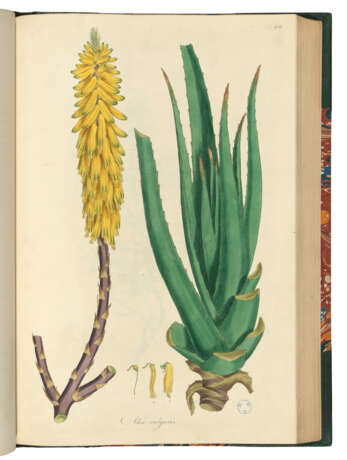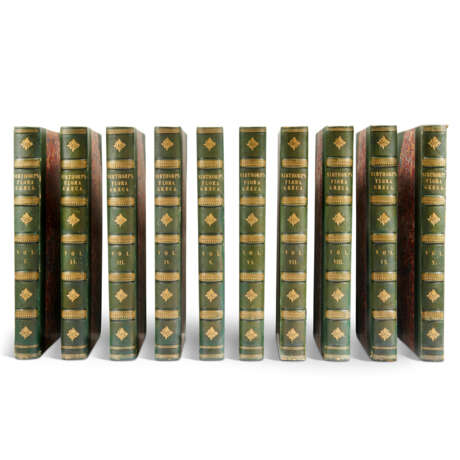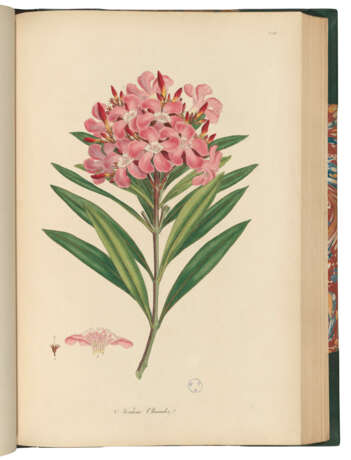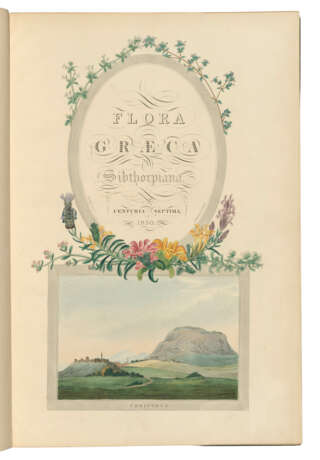SIBTHORP, John (1758-1796), Sir James Edward SMITH (1759-1828), and John LINDLEY (1799-1865).
13.07.2022 10:30UTC +00:00
Classic
Sold
151200GBP £ 151 200
| Auctioneer | CHRISTIE'S |
|---|---|
| Event location | United Kingdom, London |
| Buyer Premium | see on Website% |
Archive
The auction is completed. No bids can be placed anymore.

ID 794408
Lot 221 | SIBTHORP, John (1758-1796), Sir James Edward SMITH (1759-1828), and John LINDLEY (1799-1865).
Estimate value
£ 150 000 – 250 000
Flora Graeca: sive plantarum ranorum historia, quas in provinciis aut insulis Graeciae. London: 1806-1840 [watermarks from 1802-1847].
'This book is one of the most impressive monuments of botanical illustration (Ferdinand Bauer), botanical exploration (Sibthorp's perseverance notwithstanding bad health) and taxonomic craftsmanship (J.E. Smith)' (Stafleu). 'One of the rarest and most beautiful in both plates and typography of all botanical works' (Great Flower Books). John Sibthorp (1758-1796) graduated at Oxford in 1777 and studied medicine in Edinburgh and Montpellier. He succeeded his father as Sherardian professor of botany at Oxford in 1784 and left England soon after for Göttingen and Vienna, where he studied the Dioscorides manuscript, the Codex Vindoboniensis, and was introduced to Baron Nikolaus Joseph von Jacquin to Ferdinand Bauer. Sibthorp planned a botanical tour of Greece and the Levant to identify more accurately the plants named as remedies by Dioscorides, and persuaded Bauer to join him as botanical artist, together with Sibthorp's brother-in-law, John Hawkins. Returning to London in 1787, Sibthorp took part in the foundation of the Linnean Society in 1788 and began work on Flora Oxoniensis (published 1794), while Bauer meticulously prepared his own finished drawings from sketches made in Greece, using his elaborate colour-coding system, and continued this labour in England during Sibthorp's second expedition to the Levant in 1794-1795. During his return to England, Sibthorp contracted tuberculosis and died in Bath, on 8 February 1796, aged 27. In addition to the bequest of his library to Oxford University and the foundation of the Sibthorpian chair there, all of the drawings and material for Flora Graeca were similarly bequeathed with an endowment for publication costs. Sir James Edward Smith was appointed, at an annual salary of £150, to write the work and completed vols. 1-7 part 1 (published 1806-1831) before his death in 1828. John Lindley was Smith's successor and vols. 7 part 2-10 were published between 1832 and 1840. Flora Graeca serves as the principal monument to Sibthorp (the engraved titles memorialize his untimely death). 'Hawkins (who died in 1841) and [Thomas Platt supervised the publication of these ten noble volumes from start to finish. Superbly printed and illustrated, it was the finest illustrated flora produced in England and fundamental to the study of Greek plants' (Blunt and Stearn).The entire cost of the undertaking was £30,000 but only 30 subscriptions were taken up, probably because of the enormous cost of £254 per set. Of these 30, only 25 subscriptions were completed (thus each £254 set cost £1000 to produce!). Henry C. Bohn took over the plates and stock from Oxford University and, in 1847, advertised a further 40 copies for sale using the remaining stock of the text and reprinting a large number of the plates on paper watermarked 1845-1847. The current work has a mix of early and late watermarks, with the early volumes bearing dates of 1802 and the later ones 1847. Blunt & Stearn, The Art of Botanical Illustration, pp. 224-226; Cleveland Collections 713; Dunthorne 282; Great Flower Books, p. 76; Henrey 1319; Nissen BBI 1840; Pritzel 8660; Stafleu & Cowan TL2 11.935.
10 volumes, folio (479 x 333mm). 10 handcoloured engraved titles, 966 handcoloured plates by James Sowerby and James de Carle Sowerby after Ferdinand Bauer, colophon leaves in vols 1 and 10 (2 engraved titles lightly spotted, a few plates in vol. 1 a little browned, a very few plate numbers shaved). Contemporary green half morocco gilt, gilt edges, by Hammond (extremities faintly rubbed). Provenance: Massachusetts Horticultural Society (bookplates with purchase date of 1871, and stamps on plates; sale Sotheby's New York, 1 October 1980, lot 164).
Special notice
No VAT on hammer price or buyer's premium.
| Place of origin: | Northern Europe, Europe, United Kingdom |
|---|---|
| Auction house category: | Printed books |
| Place of origin: | Northern Europe, Europe, United Kingdom |
|---|---|
| Auction house category: | Printed books |
| Address of auction |
CHRISTIE'S 8 King Street, St. James's SW1Y 6QT London United Kingdom | |
|---|---|---|
| Preview |
| |
| Phone | +44 (0)20 7839 9060 | |
| Buyer Premium | see on Website | |
| Conditions of purchase | Conditions of purchase |







